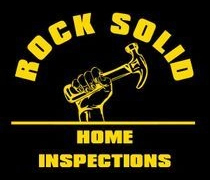What Is A Home Inspection?
with Patrick Gulka
Patrick from Rock Solid Home Inspections explains what a home inspection entails, addressing a common but complex question. A home inspection is a visual, non-destructive examination of a house, meaning inspectors do not cause any damage or open walls to investigate hidden issues. Despite these limitations, a thorough inspection is conducted, focusing on major components such as the exterior, roof, attic, and basement. Patrick emphasizes that home inspection is not just about finding defects but also about educating the homeowner. Inspectors explain the problems they find, their implications, and recommend specialists if needed. The process is designed to be a crash course in homeownership, providing valuable knowledge within the typical two-to-three-hour inspection window. While certain systems like septic tanks, wells, and wood-burning fireplaces require additional specialized certifications, the home inspector serves as a trusted resource to guide homeowners through what can be a complex process. Ultimately, the goal of a home inspection is to empower buyers with information and help them feel confident in turning a house into their home.
Highlights
- 🏠 Home inspection is a visual, non-destructive examination of a property.
- 🔍 Inspectors cannot open walls or cause damage to check hidden issues.
- 📋 Inspection focuses on major areas: exterior, roof, attic, and basement.
- 🧰 The process is as much about education as it is about identifying problems.
- 📞 Inspectors recommend trusted specialists when needed.
- 🚫 Some systems like septic, wells, and wood-burning stoves require separate certification.
- 🎯 The goal is to empower homeowners with knowledge to make informed decisions.
Key Insights
- 🏡 Non-Destructive Nature Limits Some Investigations: Home inspections rely solely on what can be visually observed without damaging the property. This limitation means that some potential issues hidden behind walls or under surfaces may go undetected until further specialized inspections are performed. Buyers should understand these boundaries to set realistic expectations.
- 📚 Education is the Core Value of a Home Inspection: Beyond spotting defects, the inspection process is designed to educate buyers about their prospective home. This education includes understanding the nature of problems, their severity, potential remedies, and maintenance advice, which helps buyers become better homeowners. This positions inspectors as educators, not just defect finders.
- 🏗️ Focus on Critical Structural and Functional Areas: Inspections prioritize the most critical components that affect the safety and integrity of the home: the exterior envelope, roofing system, attic space, and basement or crawl spaces. These areas often reveal the most pressing concerns and potential costly repairs, making them a logical starting point for the inspection process.
- 🤝 Trusted Referral Network Improves Homeowner Support: Inspectors often serve as a bridge to other professionals like contractors, plumbers, electricians, or specialists for systems outside their scope. This network is vital for buyers who may not know whom to trust or contact, enhancing the value of the inspection service.
- ⏱️ Time-Constrained but Thorough Process: Typically lasting between two to three hours, the inspection balances thoroughness with practical time constraints. Inspectors methodically examine the house “inch by inch,” ensuring no major area is overlooked while maintaining a manageable schedule for clients.
- 🔧 Certain Systems Require Specialized Certification: Areas such as septic systems, wells, and wood-burning fireplaces are not covered under standard inspections due to the need for specific expertise and certifications. Buyers should be aware that these require separate evaluations to fully understand their condition and compliance.
- 🔄 Home Conditions Can Change Over Time: The inspection reflects the state of the home at a single point in time. Factors like weather, wear, and maintenance can alter conditions after the inspection. Buyers should consider this when planning future maintenance and inspections, recognizing that an inspector cannot predict future problems but can provide current status and recommendations.
This comprehensive explanation by Patrick highlights the practical, educational, and advisory roles of home inspections, helping buyers navigate the complexities of homeownership with confidence and clear expectations.
